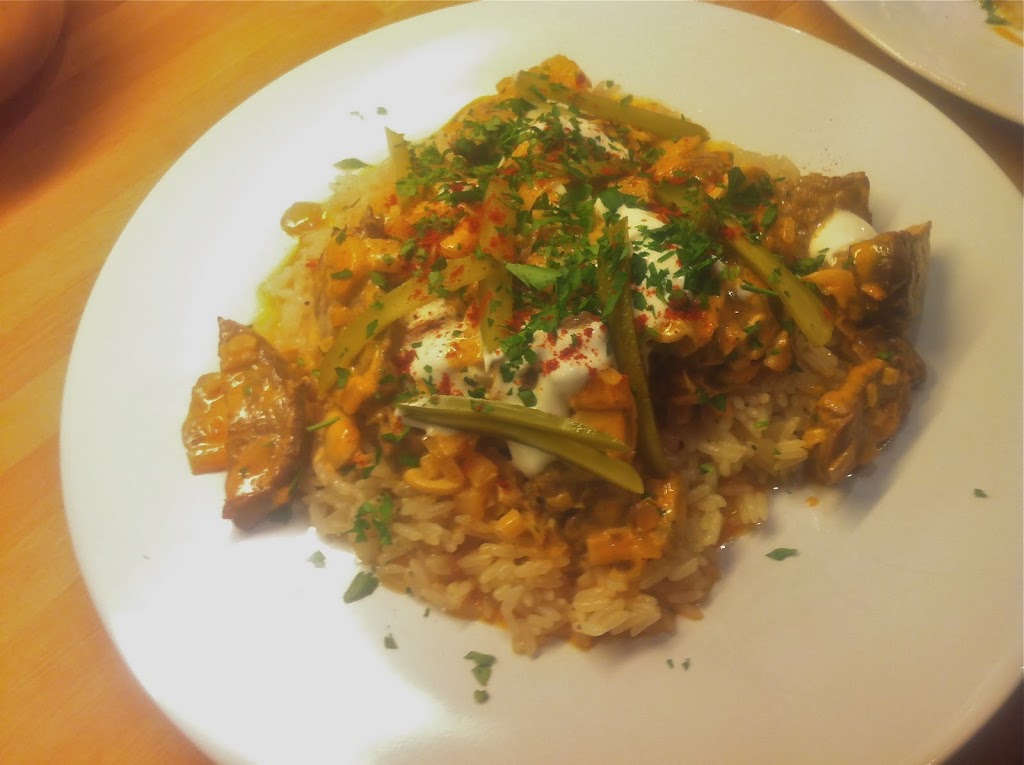 This is a nice pasta dish that I cook a lot because it’s relatively easy and really yummy.
This is a nice pasta dish that I cook a lot because it’s relatively easy and really yummy.
The nuts and vegetables can of course be varied to whatever is available in the shops or in season. When wonderful purple sprouting broccoli is in season I tend to use that, otherwise tenderstem broccoli works just fine.
On this occasion I’ve used Casarecce pasta but any short shaped pasta shape will do.
Ingredients for Casarecce with gorgonzola, broccoli and tomato:
200g Gorgonzola Piccante, cubed
200g tenderstem broccoli
250g Casarecce (or other short-tube pasta)
100g Crème fraîche
0.5 tsp Dijon mustard
15g butter
2 preserved anchovy fillets, finely chopped
2 cloves of garlic, finely chopped
3 vine-ripened tomatoes, concasse
Handful of pinenuts
Handful of walnuts
Splash of white wine or Vermouth
Olive oil
Extra Virgin Olive Oil
Salt
Pepper
How to make Casarecce with gorgonzola, broccoli and tomato:
First thing to do is to put a sheet pan in the freezer, which we will use later for the broccoli.
Start with putting on water for the pasta and when it’s cooking salt the pasta water to the salinity of sea water (around 10g salt to 1 liter water). Put on another pan of water for the broccoli, again with sea water salting levels.
Make a cross top and bottom on the tomatoes then put in a bowl with boiling water for a few minutes. When the skins are softened peel the tomatoes and then with a paring knife remove the bit of stem left at the top. Concasse the tomatoes and reserve.
Put the oven on 180C fan. Oil two sheetpans and put the pinenuts on one and walnuts on another. Lightly salt both the nuts. Roast the nuts in the oven until nicely golden. Leave the nuts on kitchen-towel to drain some of some of the oil off. When ready you can crush the walnuts with the underside of a pan or in a pestle and mortar.
Start the sauce by melting the butter with a touch of olive oil in a smallish stainless steel pan. When the bubbling subsides add the garlic and anchovies, stir constantly with a wooden spoon until the anchovy is dissolved and the garlic is slightly brown. Add the cubed gorgonzola to the pot together with a splash of white wine and the dijon. Lower the heat to low and continue stirring and basting the gorgonzola cubes until they melt. Add a large tablespoon of the crème fraîche and stir. Taste the sauce as you go along to see how dominant you want the gorgonzola to be, tame it with more crème fraîche if the sauce needs to be milder. That’s the sauce pretty much done, let it bubble away ever so gently on a low flame.
Boil the broccoli until tender, not too al dente but not too soft either. When cooked (test doneness with a sharp paring knife) drain the broccoli and then spread out on the frozen sheet tray to cool rapidly without leaking flavour. Set aside.
Boil the pasta. When done to al dente drain but save a bit of the starchy pasta water. After draining put the pasta back in the pasta pot and put some extra virgin olive oil through it.
To assemble the dish, roughly chop the broccoli and add to the warm pasta pot. Toss to heat through. Check the consistency of the gorgonzola sauce and if too thick thin it out a bit with the starchy pasta water. Add the gorgonzola sauce to the pasta pot too and stir through. Finally add the tomato concasse and stir through.
Serve the pasta on warmed pasta plates and top with the nuts.







